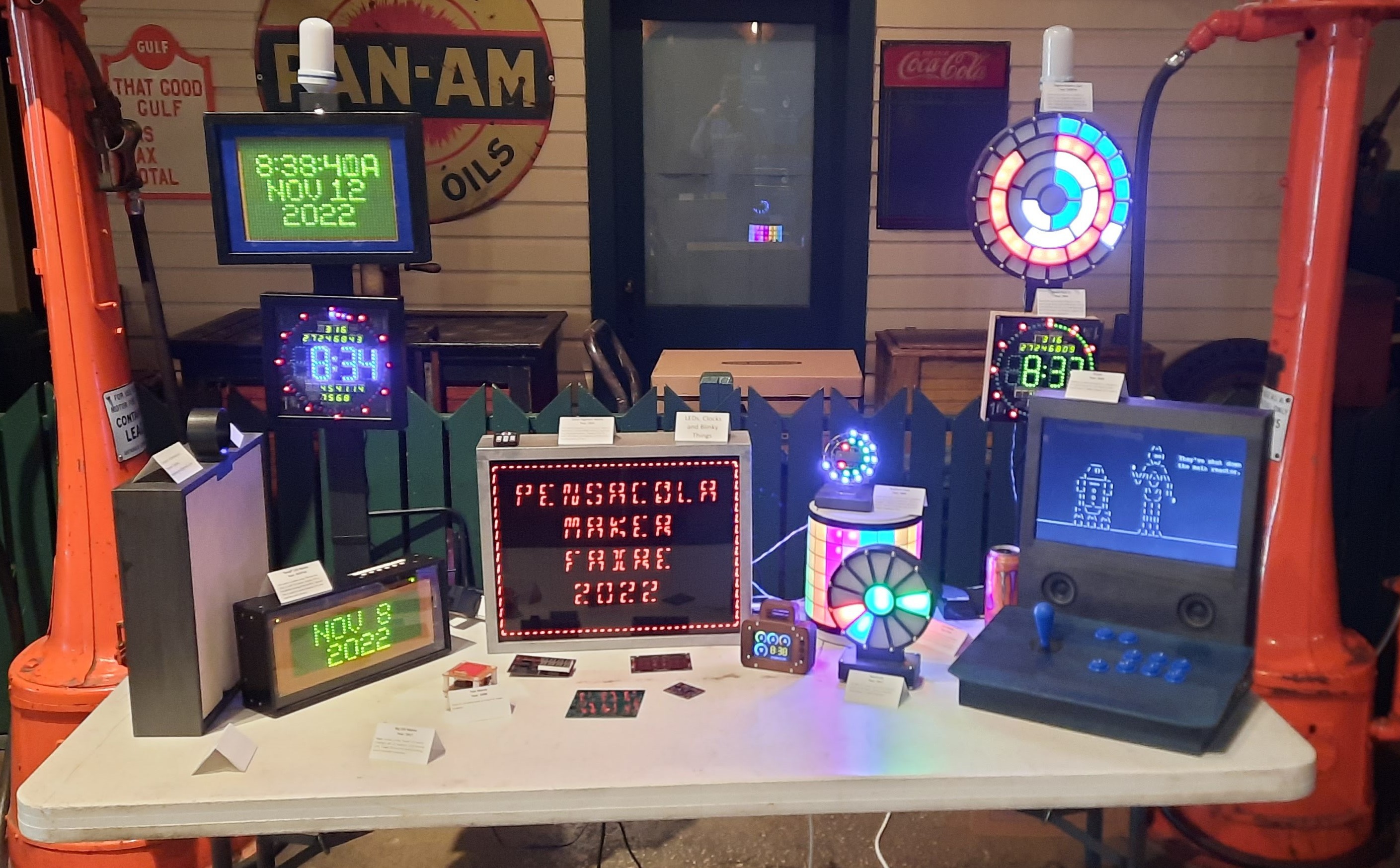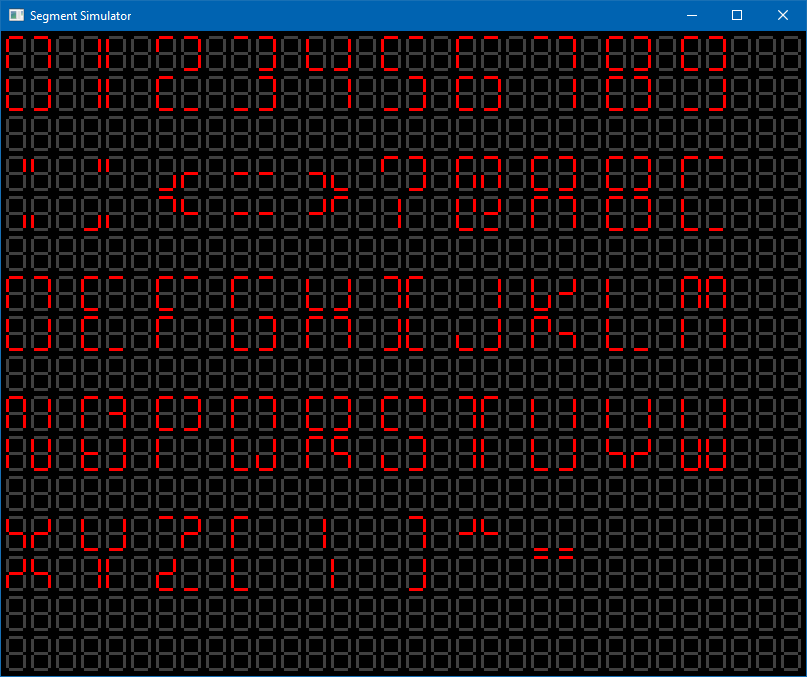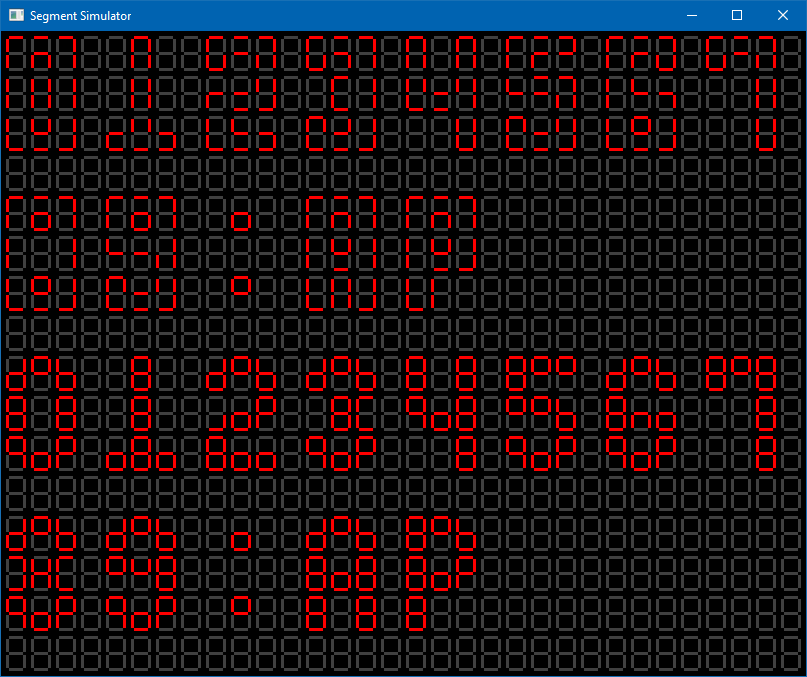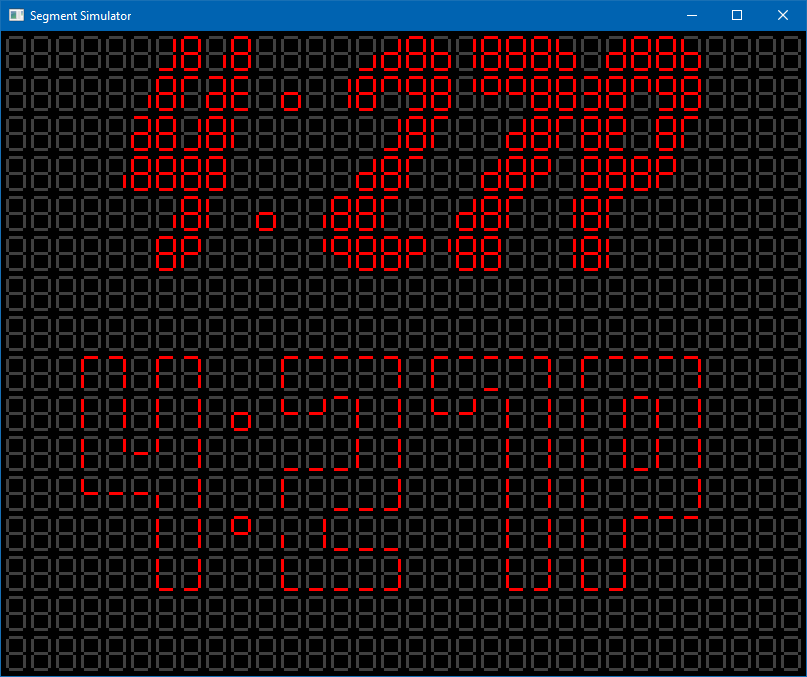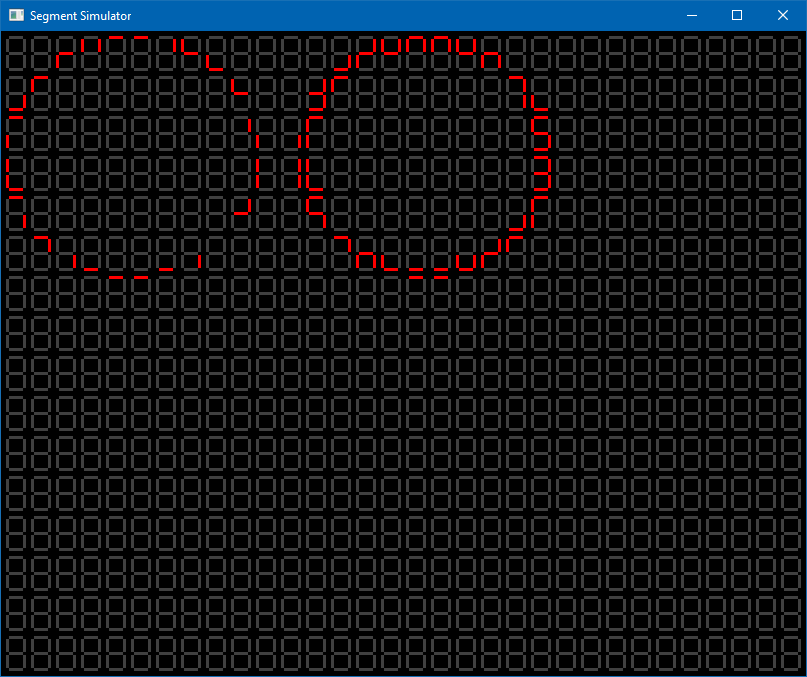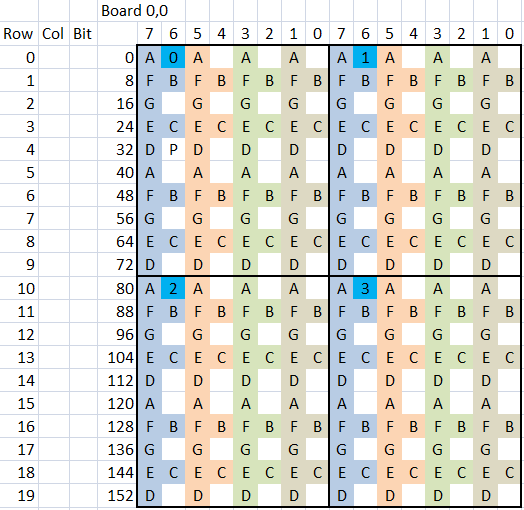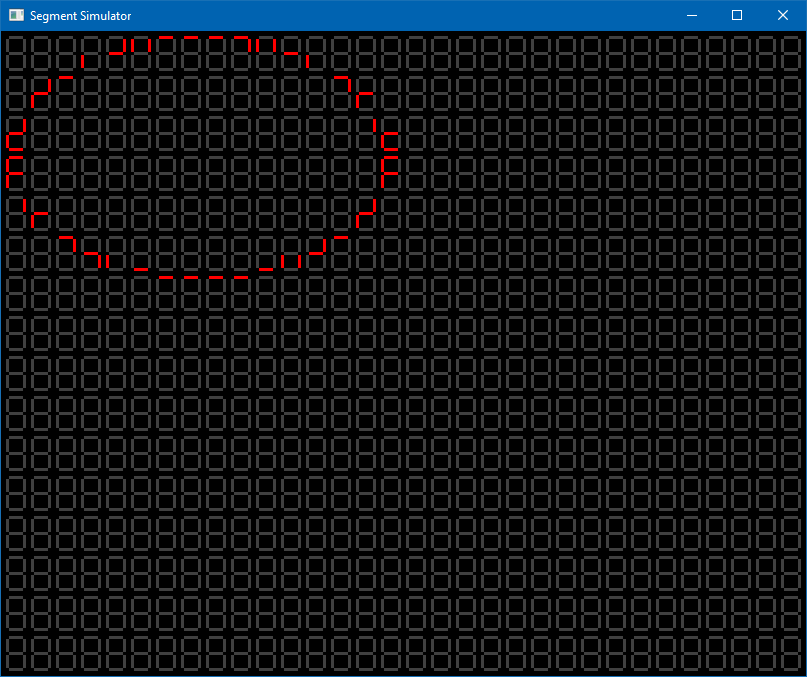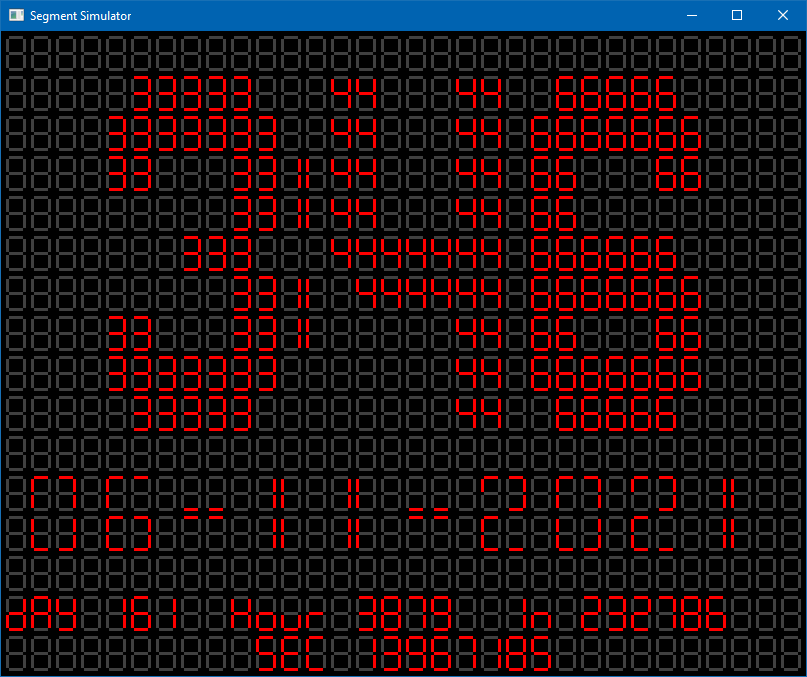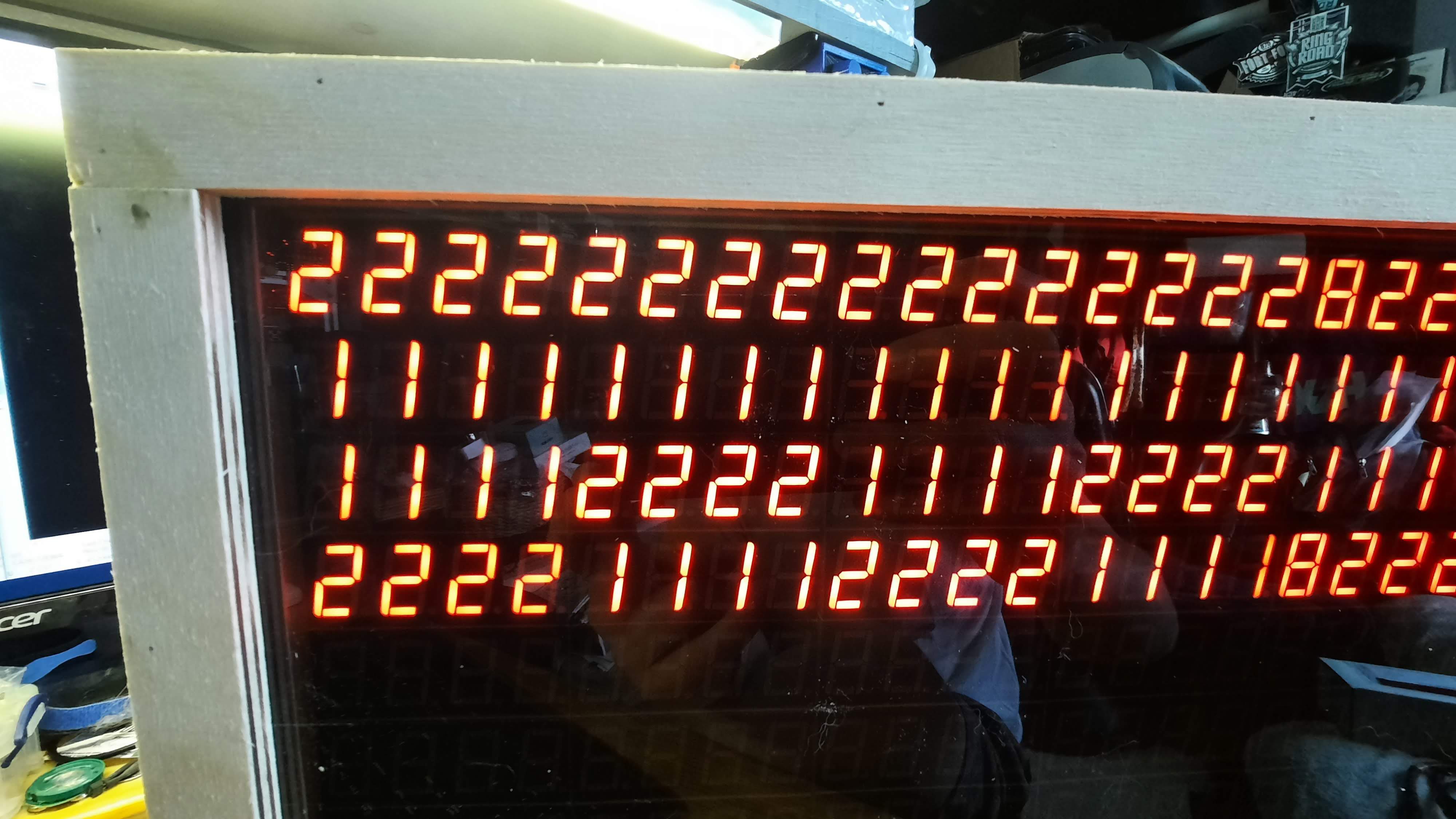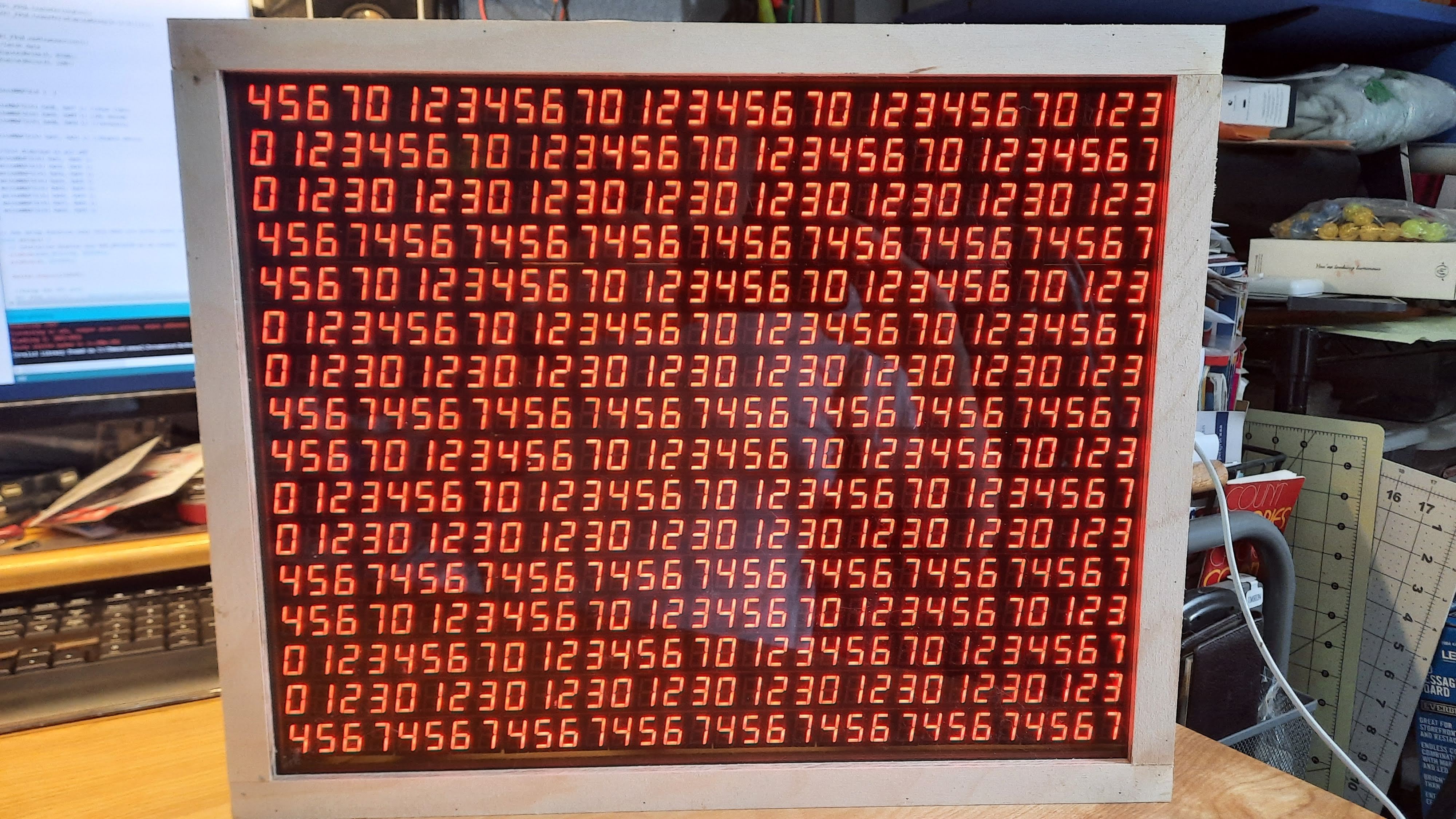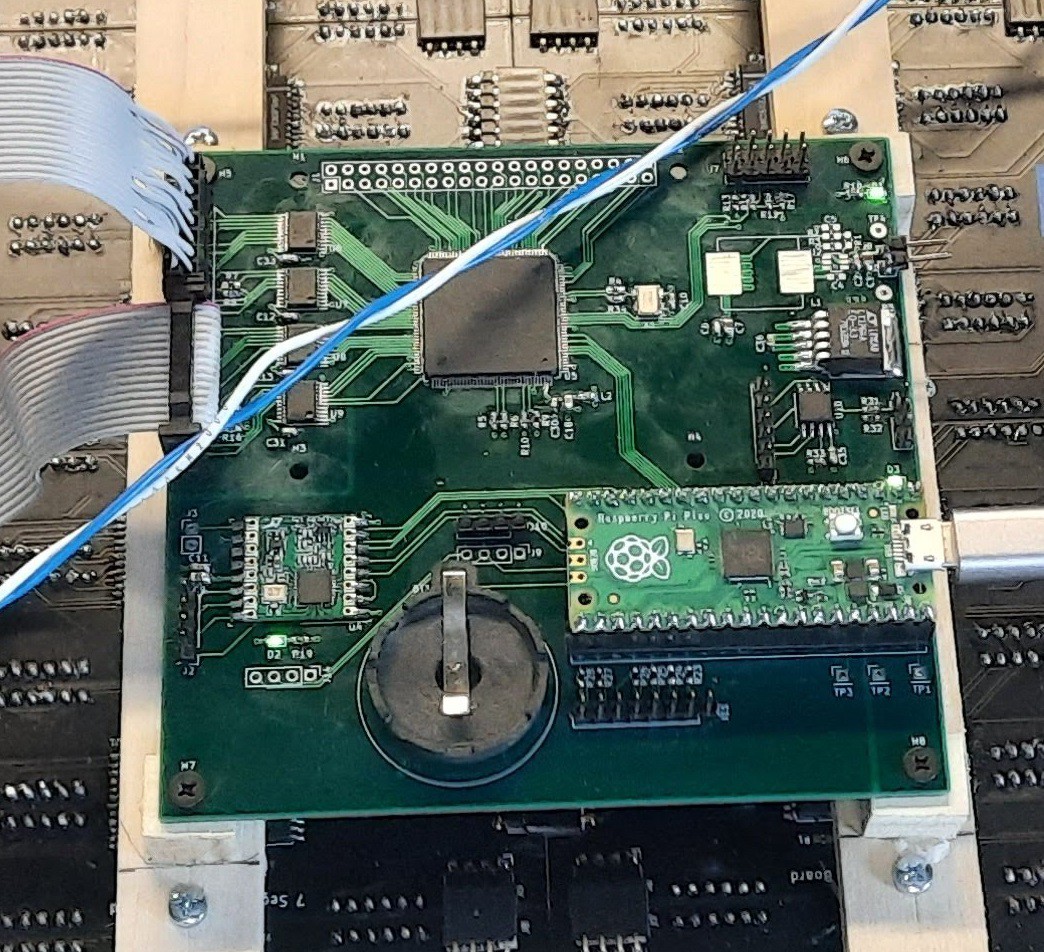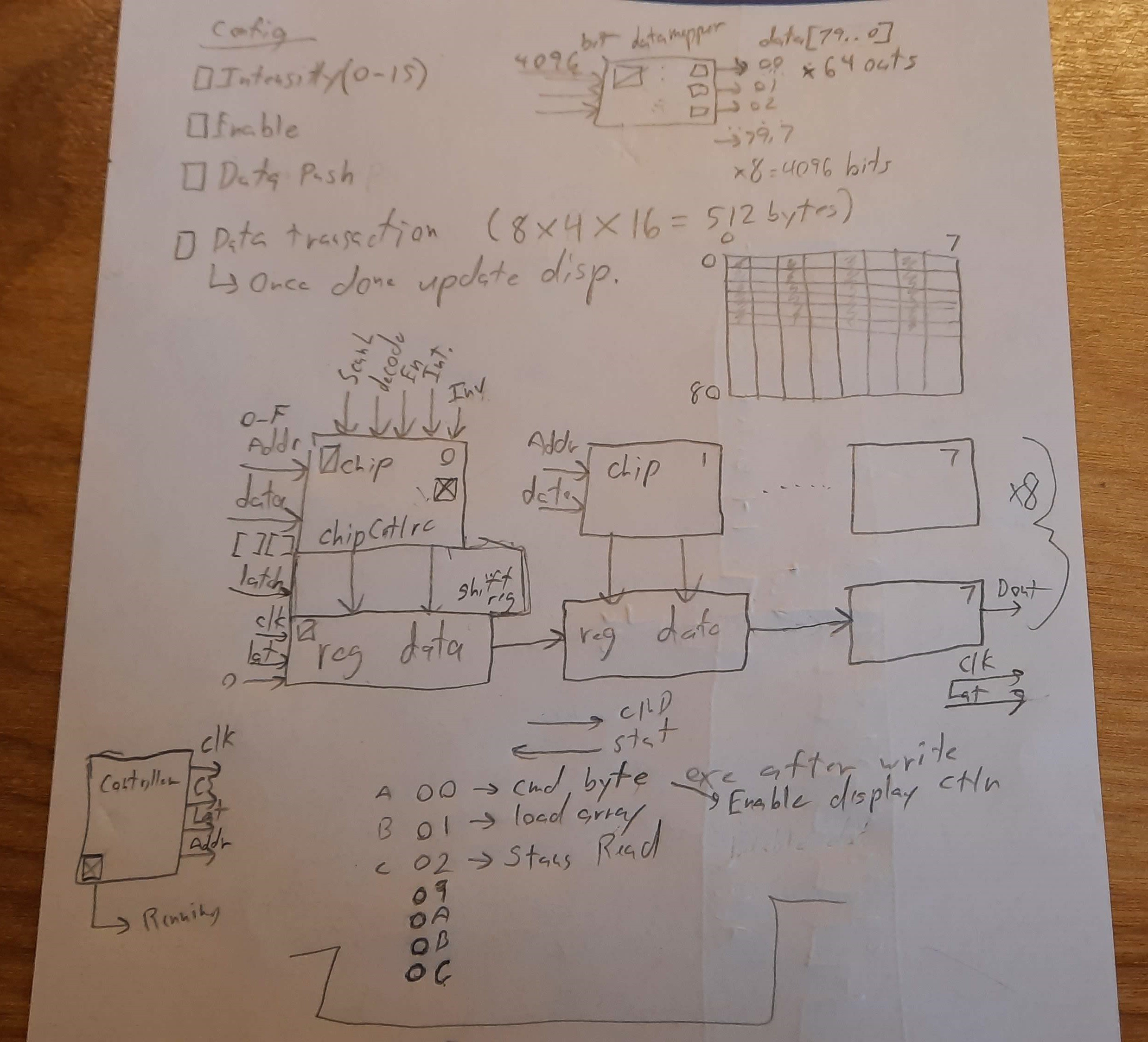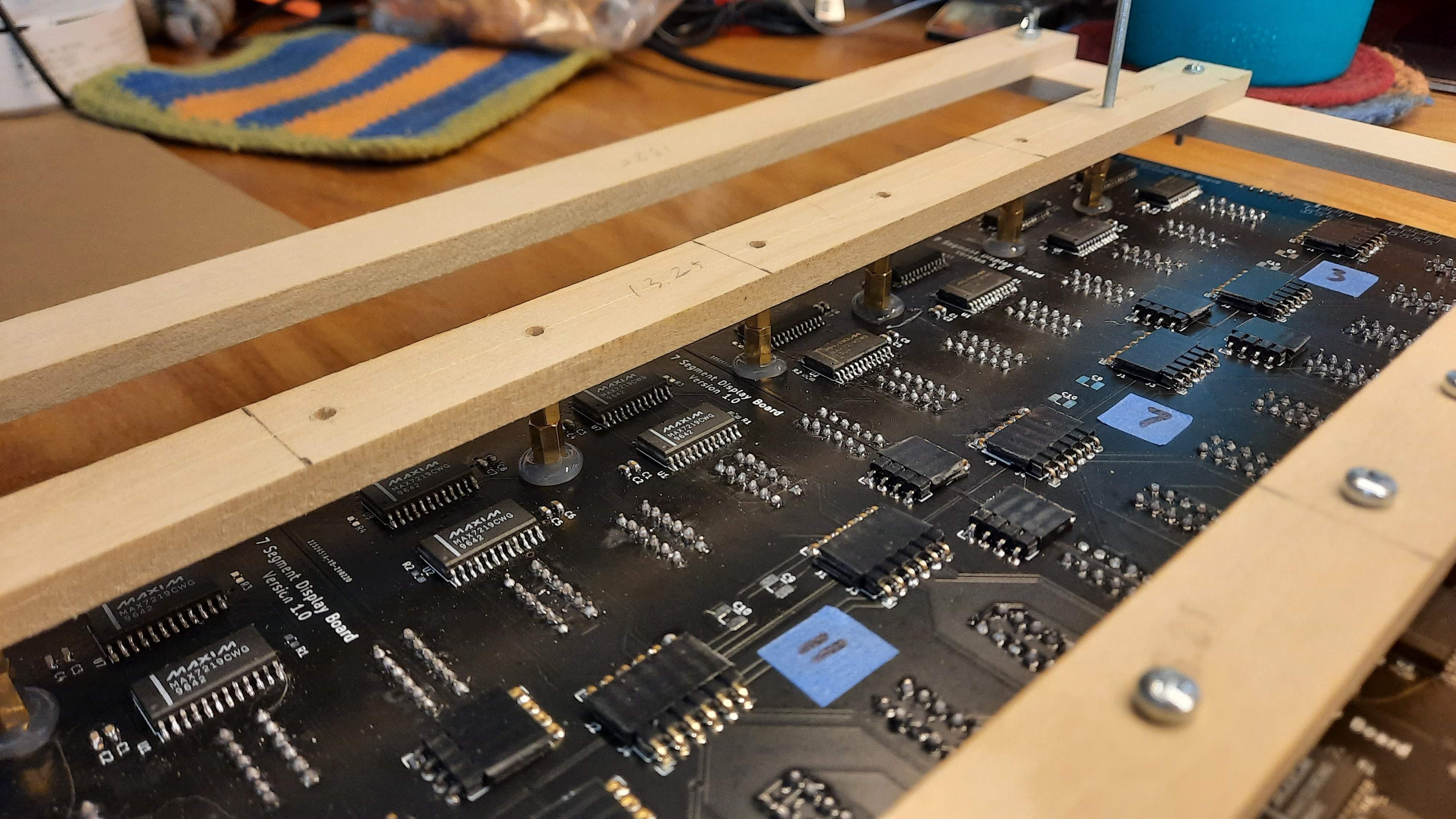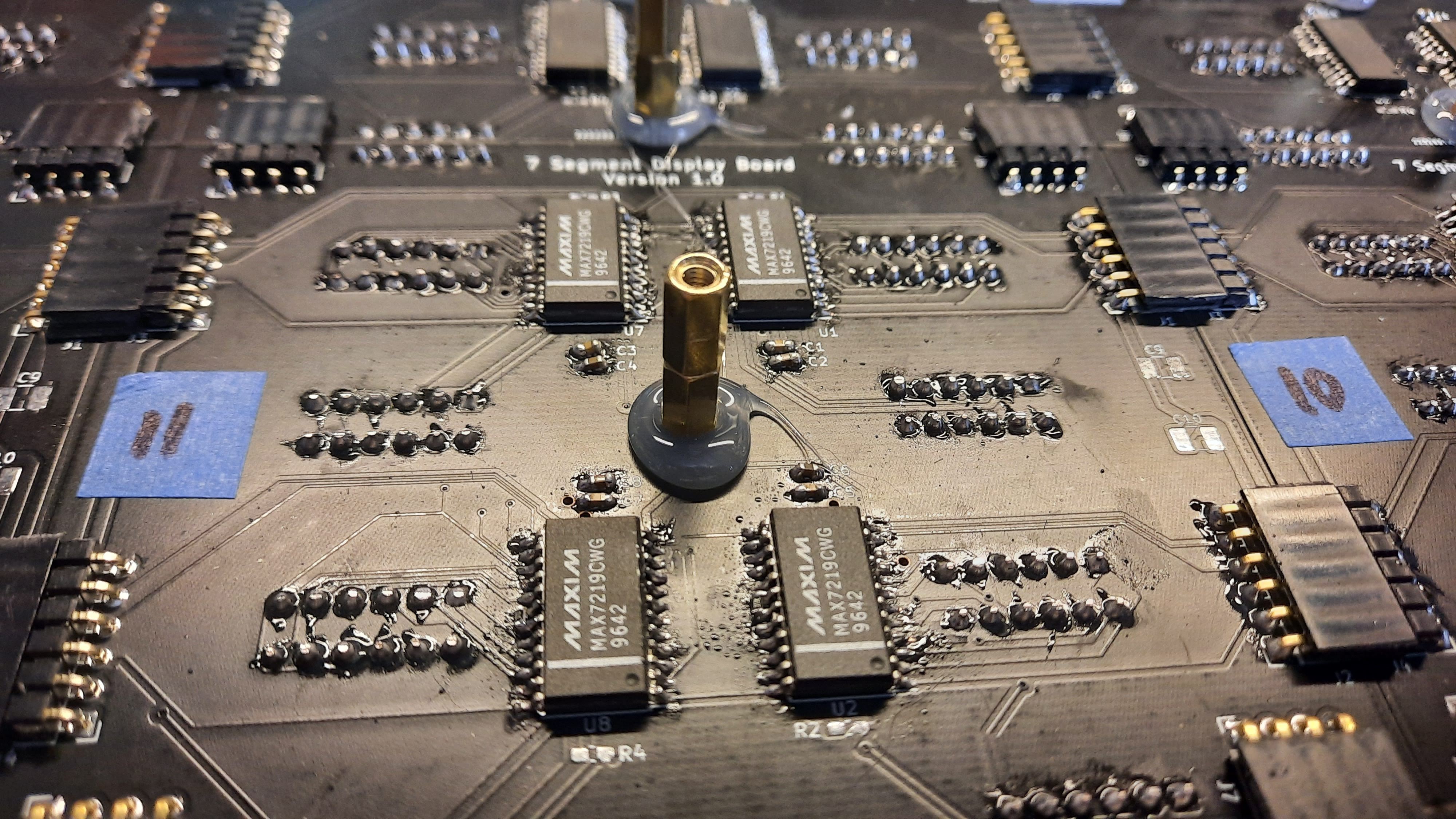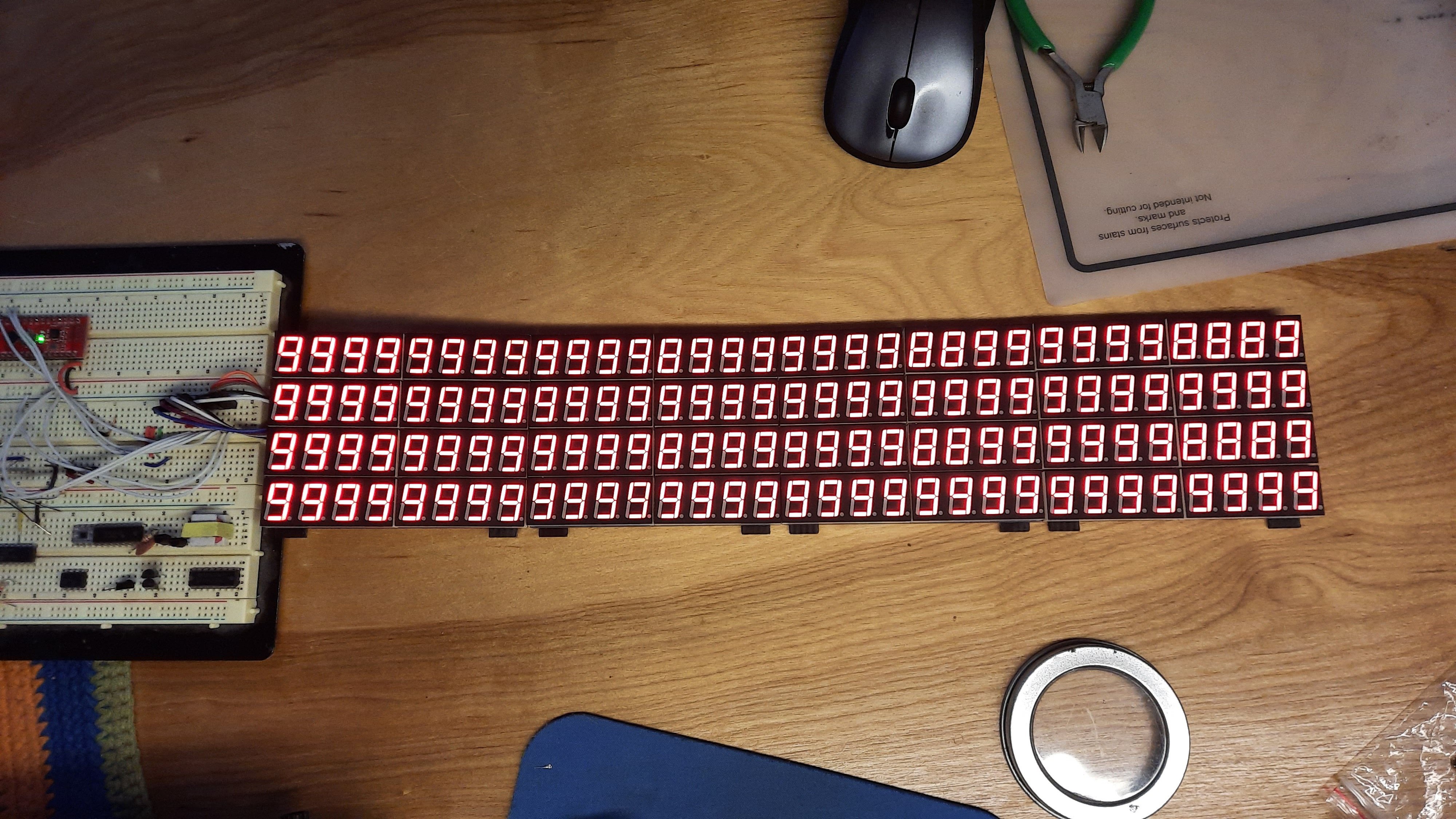-
Finally Complete'ishly Done'ish.. just moving on to a bigger version...
01/30/2023 at 18:56 • 0 commentsTook the completed display to the 2022 Pensacola Maker Faire. The reception was pretty good.
![]()
Video of the display in action:
-
Basic Image Processing
06/12/2021 at 22:42 • 0 commentsGot basic image processing functioning and the new segment mapping scheme looks to be holding up fairly well. Images are created as black and white BMPs then converted to C byte arrays for display.
![]()
-
Fonts, Fonts, Fonts
06/11/2021 at 21:43 • 1 commentI decided I needed some fonts then I got carried away and ended up with like 6-7 sizes and types... oh well. The fancy 6x6 font is an adaption of the one seen on Here. Not 100% sure who the originator is.
![Font 2x2 - Covers ASCII characters 0x30 to 0x5F... Google it Font 2x2 - Covers ASCII characters 0x30 to 0x5F... Google it]()
Font 2x2 - Covers ASCII characters 0x30 to 0x5F... Google it ![Font 2x3 - Covers 0-9, Colon, A and P Font 2x3 - Covers 0-9, Colon, A and P]()
Font 3x3 - Covers 0-9, Colon, A and P ---------- more ----------![Font 6x6ish - Covers 0-9, Colon, A and P Font 6x6ish - Covers 0-9, Colon, A and P]()
Font 6x6ish - Covers 0-9, Colon, A and P ![Font 7x9 - Covers 0-9. Largest font to fit on the display and still show time. Font 7x9 - Covers 0-9. Largest font to fit on the display and still show time.]()
Font 7x9 - Covers 0-9. Largest font to fit on the display and still show time. -
Pixel Mapping - Take 2
06/11/2021 at 21:09 • 0 commentsAfter some thinking and a little random Googling I decided to go with the different mapping scheme that would lead to a more sparse mapping but would look better with animations. Unfortunately this mapping yields almost 50% of the pixels not being mapped to the display. But at least the circles are round. Looks like I am going to have to investigate how to add a brush width to my drawing functions or just be cognizant that single pixel wide shapes may not map well.
![Pixel Mapping - Take 2 Pixel Mapping - Take 2]()
Pixel Mapping - Take 2 ![Single pixel vs double pixel wide circle. Single pixel vs double pixel wide circle.]()
Single pixel vs double pixel wide circle. -
Pixel Mapping - Take 1
06/11/2021 at 20:44 • 0 commentsI started out using the same pixel mapping strategy as PlingBoot. After getting some basic fonts on the screen I thought is was going to work well. I looks fine with any graphics that are drawn with the pixel mapping in mind. For doing any dynamic movement it does not hold up so well.
In my base mapping attempt the array of seven segment displays are mapped from a 64x80 bit array to the segments using the method shown in the image below. The image shows the mapping that is done fore each of the display boards. This yields to about 30% of the pixel in the bit array not being used. It also unfortunately yields to a none 1 to 1 mapping in the display. This means that if you draw a circle in the bit array when it is mapped to the segment array it turns into an egg...
![Segment Mapping - Take 1 Segment Mapping - Take 1]()
Segment Mapping - Take 1 ![That's not a circle That's not a circle]()
That's not a circle -
Simulation
06/11/2021 at 20:26 • 0 commentsAfter getting tired of the upload process of the PICO I decided to write a simulator for the display so I could write most of the code on the PC. The simulator started out in C# but after realizing that I did not have the knowledge to make it work correctly I switched to C++ and OpenGL. In a previous life I have done a good bit with OpenGL but it has been 10+ year since then.
The simulator is written using Visual Studio 2019 C++ and OpenGL. The viewport was adjusted to yield a 2D screen. The only difference in the code running on the PICO and the simulator is what goes on inside the display function. In the simulator it draws the image. On the PICO is sends the data to the FPGA for display. Pretty happy with how the simulator came out. It is written in such a way that it can be dynamically scaled so that when I inevitably make a bigger display I can use the same simulator.
![]()
-
Well that sucks....
05/24/2021 at 23:47 • 0 commentsAfter getting the FPGA and PICO up and running it looks like I decided to flip the orientation of two of the displays on each display board. Fortunately I have an FPGA that is really good at single clock data remapping. A little bit of hacking in an inversion bit to the Chip Controller module in the FPGA and everything is better.
![]()
That is a lot of numbers......
![]()
-
Control Board Update
05/24/2021 at 23:42 • 0 commentsUnfortunately as I was excited to the display going I did not do much to document the control board assembly. It went fairly well. No white wires were needed as of yet. Only oppsie so far is that the two connectors for the display chains are about .05" to close to allow two ICD connectors to plug in. Had to create crimp connectors for the other.
![]()
Things tested:
- Power Supply (ditched the switcher and just used the linear regulator)
- Pico is up and running
- FPGA comes up and configures
- All SPI outputs for the display matrix are working.
Things to tested: Basically everything not required to make lights blink...
- Real time clock.
- Temp sensor
- RF Module
- ATINTY for IR receiving
---------- more ----------Basic FPGA operation:
The FPGA is fairly straightforward. Below is a list of the major modules and my "block diagram" of the internals. I can provide more information if anyone is interested in how it works.
FPGA Modules:
- SPI Controller - Allows the PICO to control the matrix over SPI
- Data Mapper - Maps the data from the XY display RAM to the segment memory
- Chip Controller - Handles the configuration and programming of a single MAX7219
- Display Controller - Handles the clocking and addressing of data form the Chip Controllers
- Matrix Core - Implements the 8x8 grid of chip controllers, attached to the display controller, Data mapper and display RAM. This is where most of the work gets done.
FPGA Block diagram:
![]()
-
Mechanical Assembly
05/24/2021 at 23:24 • 0 commentsThe box and supporting structure is made from hardware store Poplar. A rectangular box surrounds the display boards. The boards are held off the grid using 10mm M3 standoff because that is what you can get quickly from Amazon. The standoffs are held to the PWB using hot snot (aka hot glue). Not the best approach but works.
![]()
![]()
-
Testing Display Boards
05/24/2021 at 23:20 • 0 commentsAfter some grunting and possibly a little bit of light profanity I finally got the display boards working. Turns out I pulled the current setting resistor on the MAX7219 to ground rather then VCC like it is supposed to be. Fortunately the ISET pin is next to the VCC pin so no white wire is needed. Oh well, only have to bodge 64 little freaking 0603 resistors between the pads of an SOIC.
To test the displays I rigged up trusty Arduino Nano to control the displays. And the LIGHT UP!!!!
![]()
Now to build a mount for all the displays with no screw holes.... should have thought about that more.
Number Matrix
A matrix built from sixteen boards each containing eight - four character seven segment displays for a total of 4096 individual segments.
 seasleyece
seasleyece